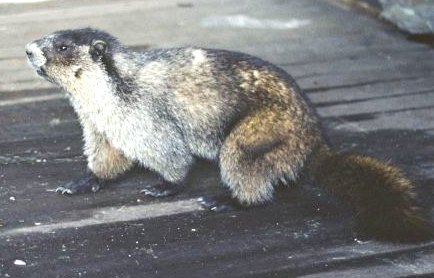
News/Reports
Sikanni Chief River ER #46, Biological and Physical : Overview
ORIGINAL PURPOSE
To conserve alpine-subalpine ecosystems representative of the northern Rocky Mountains
CURRENT PURPOSE
To conserve the northern most occurrence of Engelmann spruce in the Rocky Mountains
OVERVIEW
Physical Featuring spectacular alpine terrain in the heart of the northern Rockies, this triangular reserve encompasses the watersheds of two small streams that flow southwest into Sikanni Chief Lake at the extreme headwaters of the Sikanni Chief River. Reserve boundaries follow heights of land except the southwestern (lower) edge which follows the 1524 m (5000 ft.) contour. The varied terrain includes jagged peaks, cliffs, talus slopes, rock ledges, and vegetated alpine slopes. Alpine features such as cirque basins, moraines, small alpine glaciers, solifluction lobes and patterned ground are present. Due to the northern latitude, inland location, and high elevation, the climate is severe and the growing season short.
See the complete PDF file from BC Parks: Sikanni Chief River ER 46
Biological: The reserve encompasses two biogeoclimatic zones. A fringe below about the 1650 m level has extensive shrub cover and scattered trees characteristic of the Spruce-Willow-Birch Zone. Typical associations here are the grey-leaved willow-subalpine fir, and scrub birch-Engelmann spruce types. This is the northernmost known occurrence of Engelmann spruce in the Rocky Mountains. Small water sedge fens occur in the Spruce-Willow-Birch Zone, as well as lush timberline meadows dominated by Indian hellebore, cow-parsnip, and willows.
The reserve encompasses two biogeoclimatic zones. A fringe below about the 1650 m level has extensive shrub cover and scattered trees characteristic of the Spruce-Willow-Birch Zone. Typical associations here are the grey-leaved willow-subalpine fir, and scrub birch-Engelmann spruce types. This is the northernmost known occurrence of Engelmann spruce in the Rocky Mountains. Small water sedge fens occur in the Spruce-Willow-Birch Zone, as well as lush timberline meadows dominated by Indian hellebore, cow-parsnip, and willows.
In the Boreal Altai Fescue Alpine zone, communities dominated by alpine club-
moss (Diphasiastrum alpinum), four-angled mountain-heather (Cassiope tetragona), netted willow, arctic willow, Barratt’s willow, fireweed, white mountain-avens, and black alpine sedge have been noted. Showy wildflowers include saxifrages, fleabanes, and butterweeds.
Caribou (Rangifer terandus), Moose (Alces americanus), Hoary Marmots (Marmota caligata), and chipmunks have been seen in the reserve. Excellent habitat is present for Stone’s Sheep, Mountain Goat (Oreamnos americanus), Grizzly Bear (Ursus arctos), Golden Eagle (Aquila chrysaetos), ptarmigan and a variety of other arctic-alpine wildlife.
Hoary marmot image above by Art Carson
Flora
birch, scrub (Betula nana)
club-moss, alpine (Diphasiastrum alpinum)
cow-parsnip (Heracleum maximum)
fir, subalpine (Abies lasiocarpa var. lasiocarpa)
fireweed (Epilobium angustifolium)
hellebore, Indian (Veratrum viride)
mountain-avens, white (Dryas octopetala)
mountain-heather, four-angled (Cassiope tetragona)
sedge, black alpine (Carex nigricans)
spruce, Engelmann (Picea engelmannii)
willow, arctic (Salix arctica)
willow, Barratt’s (Salix barrattiana)
willow, grey-leaved (Salix glauca)
willow, net-veined (Salix reticulata)
Fauna
Bear, Grizzly (Ursus arctos)
Caribou (northern mountain population) (Rangifer tarandus pop. 15)
Chipmunk (Neotamias spp.)
Eagle, Golden (Aquila chrysaetos)
Goat, Mountain (Oreamnos americanus)
Marmot, Hoary (Marmota caligata)
Moose (Alces americanus)
Ptarmigan (Lagopus spp.)
Sheep, Stone’s (Ovis dalli stonei)
Wolverine, subspecies luscus (Gulo gulo luscus)
